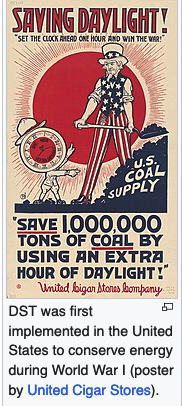By Jerry Curry, Staff Writer
It’s that time of year when we mess around with the clocks and set time back for Eastern Standard Time.
Set your clock back before you go to bed Saturday, November 2. Eastern Standard Time starts Monday, Nov. 3.
Daylight Savings Time, which is coming to an end, was widely used during World War 1 and World War 2 to save energy.
According to the Smithsonian, it was George Vernon Hudson, a New Zealand artist and amateur bug collector, who first proposed the idea in a 1895 paper.
However, 100 years earlier, Benjamin Franklin, inventor extraordinaire, pondered a similar question in a letter to the editor of the Journal of Paris. Using his watch, Franklin monitored the changing times when the sun would rise. Adjusting to this new system of sleeping and waking, based not on clocks but the sun itself, Franklin argued, would be simple.
Franklin claimed, the people of France would save hundreds of francs a year on candles if the slept when it was dark and woke when it was light. Artificial illumination would no longer be necessary. Franklin offered this without a reward, but claimed, “I expect only the honor of it.”
Well, Ben, it’s not that easy. Daylight Savings Time creates a misalignment with our bodies’ natural rhythms. This effects the sleep pattern of over 300 million people. It has been reported that insufficient sleep includes decrease in cardiovascular health, increase in diabetes and obesity, poor mental health, lower cognitive performance and an increase in the risk of motor vehicle accidents. Basically, in is a detriment to our health.
Daylight Savings Time is practiced in the United States and Canada.
No matter which time we're in, Franklin is often quoted as saying, “Early to bed early to rise makes a man healthy, wealth, and wise.”





